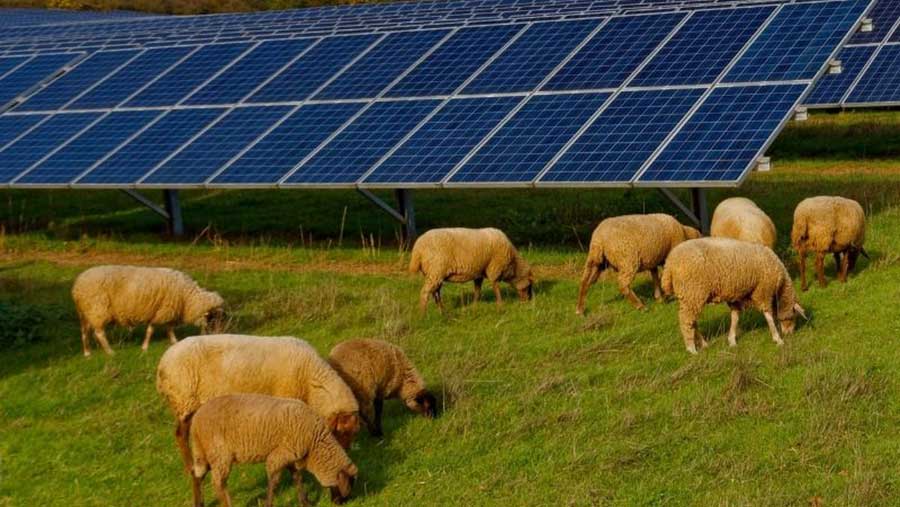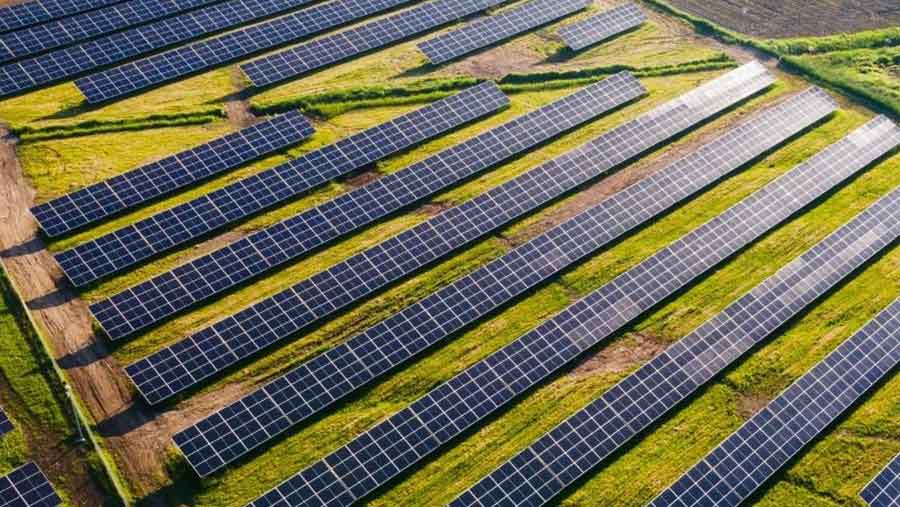Advertiser content
The energy transition can help boost British farming
Provided by
We are a developer of utility-scale photovoltaic power plants, delivering clean, renewable energy to the National Grid.
Across the UK, farmers are grappling with how to best secure the long-term futures of their farms, their families and their ability to produce some of the best food and drink in the world.
Farms that have passed down through the generations are having to resist significant financial and operational challenges, as well as the increasingly potent threat posed by a more volatile, changing climate.

© Photovolt Development Partners
In this context, the UK government is pursuing ambitious energy transition plans.
This will involve a significant increase in the rollout of solar power on a far greater scale than what has come before.
To achieve this, Britain needs responsible developers to work with landowners to deliver clean, green energy infrastructure that can lower bills, reduce emissions and provide a reliable source of power for households and businesses.
Revenue stream
The energy transition presents a major opportunity for farm owners to add a fresh, diverse revenue stream that can strengthen their ability to run a profitable, productive business.
Despite only requiring 0.5% of all UK farmland to meet Britain’s 2035 solar targets, this still represents a significant increase in the need for land to develop.
Working with a responsible, experienced developer, farmers can lease some of their least productive land for solar energy generation.
At our proposed Botley West development in Oxfordshire, we are taking land that has been intensively farmed for decades, significantly reducing the yield and quality of crops it can produce, and allowing it to recover.
The result is a double win for farmers. Not only do they eliminate the costs and work hours associated with cultivating, or even simply maintaining, their least productive fields, but they can also make significant, predictable revenues from that same land being used to house solar panels.
Restoration
A financial boost isn’t the only advantage to farmers.
Despite improvements in technology and considerable effort from the farming community, there remain significant amounts of farmland suffering the effects of intensive farming and chemical use.
This is exactly the land that can make partnering with a solar developer a ‘win-win’ for landowners.
Partnering with the right developer can help this land properly recover, more so than with a standard crop rotation.
Typically, land is leased by a developer for 25-40 years, the approximate lifespan of most solar projects.
This allows for a more complete recovery whilst solar panels sit hovering above the ground.
However, the restoration doesn’t stop there. Current UK planning rules require solar developments to deliver a minimum biodiversity net gain of 10% on the land they’re built on.
Responsible developers will often look to far exceed this number.
For example, at our Botley West site, we have pledged to deliver a 70% uplift in biodiversity, through the planting of wildflowers, native grasses, miles of new hedgerows and trees.
In turn, this can have a direct, positive impact on neighbouring, farmed fields, with this uplift attracting more pollinators and enriching soil quality.

© Photovolt Development Partners
Deadline for action
Despite the attractive proposition this presents for landowners, there is an imminent deadline that those considering solar development may not be aware of.
Next month, Ofgem are expected to approve reforms to the Neso (the new publicly-owned energy system operator) grid connection allocation process.
This will have direct consequences for those now considering solar development.
The new process will emphasise ‘deliverability’ when allocating a project’s grid connection date.
Having land agreements in place will be a key factor in improving a project’s ‘deliverability’.
The first round of grid connection decisions for projects will commence after the end of April.
As such, those still considering whether or not to lease part of their land for solar development risk missing out should they not have agreements in place by this deadline.
The consequences will mean having to wait until next year to be considered for a grid connection date.
However, a one-year wait is unlikely to only add one year to the connection date Neso provides, meaning delay now could halt a project coming online by several years, possibly well into the 2030s.
Another factor affecting Neso’s issuing of connection dates will be geography.
Simply put, should your area already have numerous solar projects due to come on stream, your later submitted proposal is likely to have its date pushed back further.
The later a project’s connection date, the later revenues can start being generated for both landowners and developers.
Without this key component, projects won’t prove commercially viable.
Therefore, if you are considering the benefits of partnering with a solar developer, now is the time to act.
A delay in the decision to agree a land deal could set back your ability to establish a reliable revenue stream for your farm by several years.
